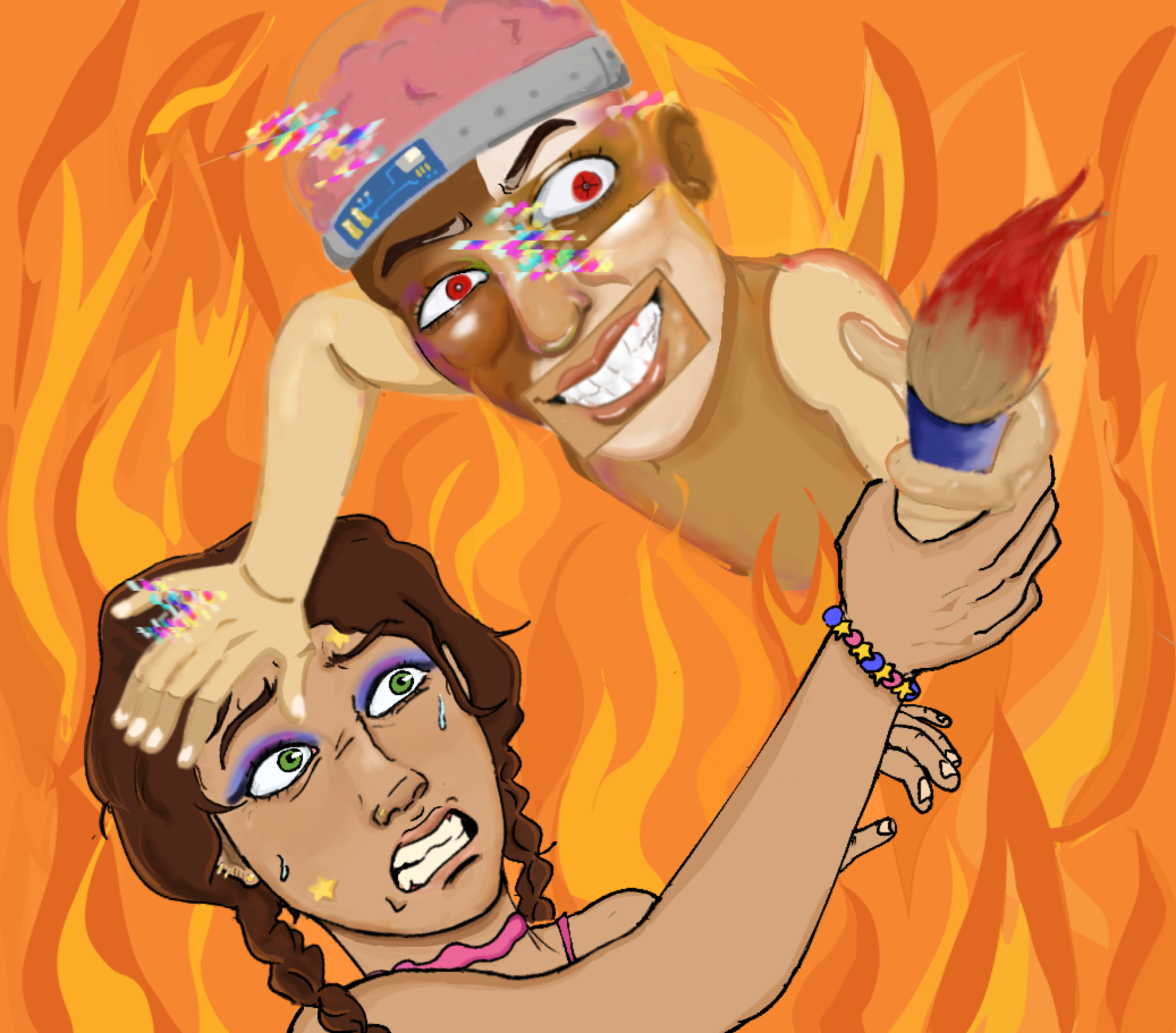Students who pour hours into sketching, painting and digital design now find their creativity discreetly competing with a new force — artificial intelligence (AI). AI image generators can make intricate visuals within seconds, often mimicking a certain artist’s style. While many students can experiment with this tool for inspiration, others see them as a growing threat over the effort and endeavor behind human-made art.
“Human art is filled with emotion and feeling, it’s made out of how we see the world. There’s just a world of difference,” Fio Casarosa, a senior at Berkeley High School, said.
The concern grows when AI-generated work begins to overshadow the authenticity and technical skill that define traditional and student-made art — especially in schools, where students are learning not just to make art, but to think critically and grow their own voices. “AI art will never express emotions or intent the way human art can,” Deja Anderson, a BHS senior, said, “You give AI a prompt, and it gives you almost exactly what you describe. But when a human creates art, you can tell their emotional state through every detail: the color, the lines, the message and the composition — which is everything about the artwork.”
The process of creating, many students say, is just as important as the final product. Using AI to make a quick image skips that important step, often resulting in strange or unnatural details. “You can see something that’s slightly off, like an extra finger or weird placement that’s unnatural or nonexistent in human anatomy. Sometimes it’s hard to tell, but that imperfection gives it away,” Alisa Garduno, a senior in BHS, said.
For aspiring artists, relying on AI feels like abandoning the idea of how art is made. “As an artist, it feels like a bit of a betrayal to myself, to all the times I’ve spent developing my skills. Especially since AI is trained on work that isn’t mine and that I didn’t spend the time learning from,” Casarosa said. A reason human-made art is so special is the hours of training, practice, and thought behind each brushstroke of the artist. AI, however, generates pieces in seconds, using only the codes and wires that make up its being.
Still, many students recognize that artificial intellegence isn’t entirely harmful. Many believe it can be a helpful tool when used responsibly. “I think there’s a big difference between using AI for something small, like ... color palettes, since there have always been color palette generators, versus using it to create a major part of the art piece or the whole thing,” Garduno said.
Yet, as AI becomes more accessible, the value of human art risks being devalued. Artists fear the meaning of creation, that comes with labor, emotion, and detail, could be lost to automation. “The process of making art is the most important aspect of being an artist. When creating art, you put so much time into your work,” Anderson said, “Small details that you might not notice at first glance are often what really bring the artwork to life. For example, when painting portraits, people often hand-paint every tiny bit of peach fuzz on the muse’s face. Even if it’s not totally visible, artists still take that extra time to make sure the final product is the best it can be.”
Visit PAGE 10 to see how BHS students think AI will affect the workplace.





